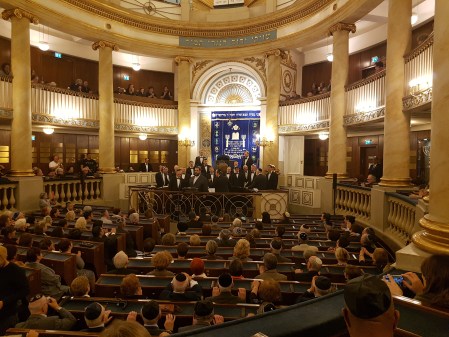
Der Stadttempel während des Kantorenkonzertes im Herbst 2016. Von Jom Kippur kann ich ja selbstverständlich (und hoffentlich) keine Bilder zeigen.
Toll, dass Ihr da seid, dass wir zahlreich zu Kol Nidrej und Ma‘ariw erscheinen. Ich betrachte es als einen der Höhepunkte des Jahres, dass wir in wenigen Minuten alle zusammen das Schema Jissraël sprechen werden. Jascher Koach!
Heute Abend möchte ich über eine große Liebe von mir sprechen. Nein, ich meine nicht von meiner Frau, die ich sehr tief liebe und der ich dauerhaft Dankbarkeit schulde, nein, ich möchte von einer anderen großen Liebe sprechen, und ich verspreche, dass meine Frau mir das verzeihen wird.




 Posted by Arie Folger
Posted by Arie Folger 
 One of the texts many, many thousands upon thousands of Jews studied recently, upon the beginning of a new cycle of Daf haYomi is the exegesis on the name of one of King David’s sons:
One of the texts many, many thousands upon thousands of Jews studied recently, upon the beginning of a new cycle of Daf haYomi is the exegesis on the name of one of King David’s sons:
